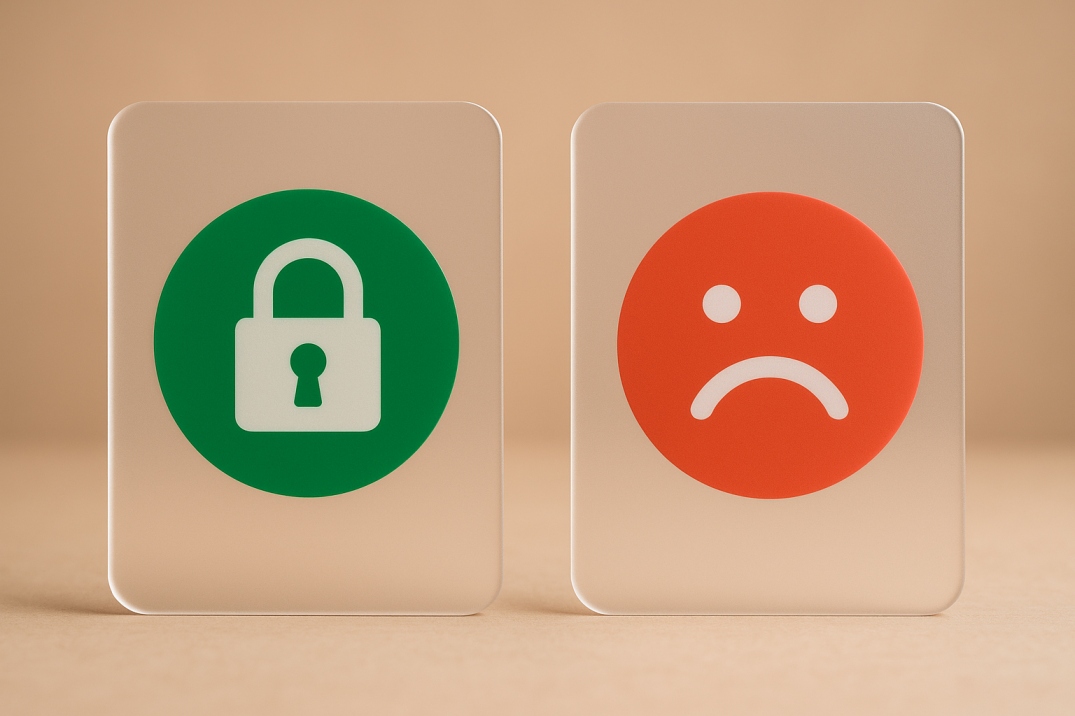Table of Contents
ToggleWhat is DRM, and how does it shape your digital freedom? Explore how Digital Rights Management protects creators, controls content use, and impacts your access to media and software.
Key Takeaways: Understanding DRM in the Modern Digital Landscape
DRM Protects Creator Rights and Fuels Digital Business Models
Digital Rights Management helps combat piracy, ensures fair compensation, and enables flexible content access through subscriptions, rentals, and regional pricing strategies.Consumer Experience Can Suffer from Strict Restrictions
Legitimate users often face frustrating limitations—such as device incompatibility, lack of offline access, and performance slowdowns due to constant verification.Digital Preservation Is at Risk
DRM can obstruct long-term access to media, creating challenges like digital rot, archival roadblocks, and platform lock-in that threaten cultural and academic preservation.Emerging Solutions Aim to Balance Rights and Access
Innovations like DRM-free releases, legal preservation exemptions, and blockchain-based rights management offer promising paths toward sustainable digital heritage.DRM Systems Vary Widely in Accessibility and Flexibility
Apple’s FairPlay locks users into its ecosystem, Google’s Widevine offers broad support with trade-offs, and Microsoft’s PlayReady provides a balanced solution for diverse platforms.
What is DRM? Understanding Digital Rights Management
Digital Rights Management (DRM) refers to access control technology employed by publishers, manufacturers, and copyright holders. Its core purpose is to restrict the use of digital content and devices. DRM technologies specifically govern:
How you use digital content.
How you share digital files.
How content can be manipulated or copied.
This copyright protection system directly affects widely used media and software, including e-books, streaming music, digital movies, and applications. Understanding both the benefits of DRM and its DRM limitations is crucial for both content creators and users navigating today’s digital landscape. Let’s unpack its key advantages and disadvantages.
Key Benefits of DRM: Protecting Creators & Enabling Choice
Understanding DRM advantages reveals its crucial role in the digital ecosystem. Here’s how DRM benefits creators, publishers, and users:
Protects Intellectual Property: DRM safeguards creators’ rights, ensuring artists, authors, and software developers receive fair compensation by preventing unauthorized distribution and digital piracy.
Controls Digital Content Usage: Content providers define how you use purchased media or software. This includes limiting installations or restricting access to authorized devices (e.g., e-books on 3 devices).
Enables Flexible Licensing Models: DRM facilitates innovative business models like streaming subscriptions, software rentals, and pay-per-view services, offering consumers more choices in accessing content.
Supports Market Segmentation: Publishers can tailor content accessibility and regional pricing strategies using DRM, maximizing global reach while respecting local market dynamics.
Boosts Revenue Streams: Effective piracy prevention through DRM directly translates to increased revenue for creators and distributors by securing legitimate sales.
Organizes User Access: For consumers, DRM-managed content often provides secure, multi-device access (like your music library everywhere) with clearly defined usage rights, enhancing convenience within legal boundaries.
Key Drawbacks of DRM: User Challenges and Limitations
DRM criticism often focuses on these significant disadvantages for consumers:
Restricts Legitimate Use: Overly strict DRM limitations can frustrate paying users—like blocking offline content access or limiting playback on multiple devices (e.g., your movie library on a new tablet).
Causes Compatibility Problems: DRM-protected content often suffers from platform lock-in, preventing playback across different ecosystems (like a purchased film that won’t play on rival hardware).
Raises Privacy Risks: Continuous DRM monitoring requires connection to authentication servers, creating user tracking concerns and potential digital surveillance exposure.
Slows Performance: DRM encryption layers and frequent license checks can cause noticeable slow content loading and choppy media playback, especially on older devices.
Increases Consumer Costs: High DRM implementation expenses typically trickle down to buyers through inflated digital product pricing.
Risk of Digital Obsolescence: When DRM servers shut down, licensed content can permanently vanish—a serious preservation challenge known as digital rot.
DRM vs. Digital Preservation: Breaking the Lock to Save Our Heritage
Digital preservation faces critical hurdles when DRM-protected content enters libraries, archives, and collections. While copyright protection matters, these long-term access barriers threaten our cultural and academic legacy:
Three Key Preservation Challenges:
Server-Dependent Obsolescence: When DRM license servers shut down, legally acquired books/media can vanish—known as digital rot (e.g., abandoned music services locking users out).
Blocked Archival Practices: DRM restrictions prevent essential preservation activities like creating backup copies or migrating content to new formats.
Platform Prison Effect: Content remains trapped in obsolete ecosystems due to DRM format lock-in, hindering migration as technology evolves.
Innovative Preservation Pathways:
DRM-Free Cultural Releases: Forward-thinking publishers offer preservation-friendly editions without usage restrictions after initial sales periods.
Legal Safeguards for Institutions: Some jurisdictions grant libraries and archives DRM exemptions, allowing limited circumvention solely for conservation.
Blockchain Preservation Experiments: Emerging decentralized rights management using distributed ledgers could enable persistent access while respecting creator rights.
Leading DRM Technologies Compared: Security vs. Accessibility
Modern content protection relies on specialized DRM solutions designed for different platforms. Understanding these top DRM systems helps navigate today’s media landscape:
Apple FairPlay DRM:
Exclusive to Apple ecosystem (iOS, macOS)
Key Features: Tight hardware integration, strict device limits, optimized streaming control
User Impact: Creates seamless Apple experiences but locks content to Apple devices
Google Widevine DRM:
Dominates cross-platform environments (Android, Chrome, Smart TVs)
Key Features: Adaptive bitrate streaming, multi-device licensing, military-grade encryption
User Impact: Enables broad device support but often requires recurring online verification
Microsoft PlayReady:
Windows/Xbox ecosystem leader with Smart TV compatibility
Key Features: Flexible subscription models, downloadable offline access, legacy system support
User Impact: Balances robust rights management with greater playback flexibility
All three content encryption systems enforce usage rules differently, creating distinct compatibility experiences. FairPlay’s walled garden prioritizes Apple ecosystem integrity, Widevine’s versatility serves diverse hardware at the cost of frequent checks, while PlayReady offers middle-ground flexibility for Windows-centric users.
Digital Rights Management plays a complex role in today’s digital world—balancing the protection of creative work with the need for user accessibility and preservation. While DRM helps combat piracy and supports flexible business models, it also poses real challenges for consumers and archivists alike.
Ready to take control of your digital experience?
Stay informed, choose content with fair access rights, and support creators who respect both innovation and user freedom. Share this guide to help others understand the impact of DRM on the content they use every day
FAQs
What is digital rights management (DRM) and why is it important?
DRM is technology that controls how digital content is used and shared, protecting creators’ rights and preventing unauthorized copying or piracy
How does DRM affect my ability to use digital media?
DRM can limit device access, restrict copying, and require online verification, which may reduce flexibility but ensures content security
Why do some digital files stop working if DRM servers shut down?
DRM requires license servers to verify access; if these servers close, your licensed content may become unusable, causing digital obsolescence
Can I legally remove DRM from my purchased digital content?
Removing DRM is usually illegal unless allowed by specific laws or licenses; it’s best to use content within the terms set by the provider
How can I manage DRM restrictions on multiple devices?
Check device limits before purchase, use official apps, keep software updated, and back up licenses to avoid losing access across devices
What are the main benefits of DRM for content creators?
DRM protects intellectual property, prevents piracy, supports flexible licensing, and helps creators earn fair revenue
Are there alternatives to DRM for protecting digital content?
Yes, alternatives include digital watermarking, fingerprinting, and blockchain-based rights management, which offer different protection methods
How does DRM encryption protect digital content?
DRM encrypts files so only authorized users with a key can access them, preventing unauthorized copying or sharing
What types of digital content use DRM?
DRM is used for e-books, music, movies, software, and streaming services to control access and usage rights
Why do DRM systems require internet connection sometimes?
Online checks verify licenses and usage rights to prevent piracy and ensure content is used legally
How does DRM impact user privacy?
DRM may track usage and require authentication, raising privacy concerns about data collection and monitoring
Can DRM cause compatibility issues between devices?
Yes, DRM often locks content to specific platforms, limiting playback on non-supported devices


